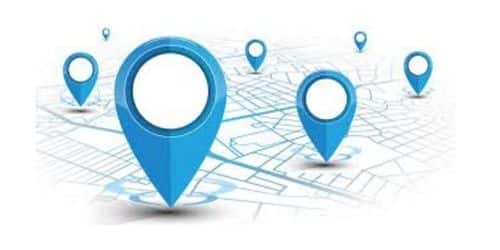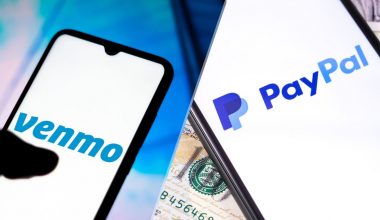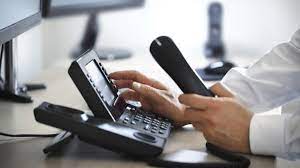In order to build your local business, geofencing can help you re-engage old clients for repeat business as well as draw in nearby new clients. You can automate time cards, keep track of the whereabouts of your fleet of cars, and keep tabs on any employees who are out in the field. In this post, we will go through the definition of geofencing, its tracking devices, how it operates in marketing and tracking, and a few pointers for getting started right away.
Geofencing
Geofencing is the process of setting up triggers that send important information to a target audience when they enter or leave a certain area. Depending on how the geofence is set up, GPS or radio frequency identification (RFID) technology may be used to trigger mobile push notifications, text or alert messages, targeted social media ads, location-based marketing data delivery, vehicle fleet tracking, or technology-disabling.
Geofencing is frequently used by businesses for marketing purposes. Geofencing can also monitor secure zones and notify management of visitors. Companies use geofencing to track cars, manage timekeeping, and monitor personnel.
How Does Geofencing Work?
In order for a geofence to track a user’s location, location services must be enabled on the user’s mobile device. Geofences are defined within the code of mobile applications.
Geofencing requires GPS- or RFID-enabled software to create a virtual fence around a location. Whenever a mobile device enters or leaves the area, the geofence will then launch a previously configured response.
Types of Geofencing
Geofencing, which creates virtual boundaries in specified locations, has practical applications in many industries.. It’s a contemporary technology created to keep track of people’s activities and alert anyone who might need to know who is traveling where, when, and how to use GPS technologies to designate zones for different objectives. The advantages of such a system are numerous, but it’s worth looking more closely at some of their applications to get a better understanding of how your company might profit from the adoption of geofencing.
#1. Blast Zones Types of Geofencing
Regardless of the current downturn, Australia’s economy still heavily depends on the resources sector. Spend any amount of time around a sizable mining operation, and you’ll immediately notice and probably hear the dangers. A geofence can notify the appropriate persons when a blast is necessary to release iron ore for extraction, for example. It is evident that no one should be in the blast zone.
#2. Site and Yard Types of Geofencing
If your company requires employees to carry supplies or equipment from a home base, also referred to as a “yard,” to a temporary work location, setting up a geofence can help you simply track the times people enter and exit each region. A bulldozer that refuels before unloading is one example.
#3. #4. Confinement Types of Geofencing
Geofences can confine people inside a region, unlike other apps that monitor who enters. Confinement keeps someone within a certain area and can notify you if they leave. Geofences can help taxi companies keep their drivers in the right place.
#4. No Go Zone Types of Geofencing
This works for areas you don’t want people in, not necessarily for safety reasons. It works similarly to blast and emergency geofences. Zones that must maintain security or safeguard the environment are suitable examples.
#5. Speed Zone Types of Geofencing
Heavy industrial areas like mine sites often have speed limits. A speed restriction geofence can help you keep track of instances of speeding and, if necessary, send out warnings. Because geofences can be changed, you can even set different speeds for different times of the day. The events log records speeding reports so managers and supervisors can detect repeat offenders.
Geofencing Marketing
Setting up virtual barriers around a location or area and keeping track of when someone using a mobile device breaches them is known as geofencing marketing. When this occurs, a notification is delivered to the person’s mobile device to promote a nearby business, product, service, or brand.
This crucial new method for more precisely identifying a company’s most likely clients is also known as geofencing advertising. Contrarily, geofencing enables advertisers to specify precise geographic restrictions for the distribution of their adverts. This enables them to target local residents who are more inclined to patronize a specific store due to factors like proximity, demography, brand affinity, and other factors. Instead of depending on extensive, highly random, and expensive mass advertising, this is much more cost-effective and effective.
How Geofencing Marketing Works
Geofences can be made in three different ways. The first has a radius around the centroid. This entails determining the center point of a structure or piece of land and then figuring out how far each direction is from that point (i.e., the radius). This creates a large proximity zone that sends ads to mobile device users near points of interest.
The second usually referred to as an isochrone, has a walk or driving duration. This entails figuring out how long it will take to go by all available means of transportation from one location to a specific destination. Then, a firm can only advertise to people who can go to their location within a certain period of time. This particular form of geofence enables marketing based on how simple it is for customers to go to a business rather than on how close they are.
The third involves the footprints of buildings. This approach represents the precise physical boundaries of a point of interest, be it a whole building, a park, or a single retail space in a mall, using measured polygons. Then a company can only notify people who have really entered the facility or are on the property. This specifically targets customers who, by entering a store, may be considering making a purchase.
Four Advantages of Geofencing Marketing
We’ve already covered some of the distinctions between geofence-based advertising and conventional marketing. Let’s now delve deeper into the four benefits it offers overdoing things in an old-fashioned manner.
#1. Timely Geofencing Marketing
Because they are provided practically instantly in reaction to a potential customer’s activities, geofencing advertising is frequently preferable to traditional ones. In order for your advertisement to be seen by potential customers, you as a business owner do not need to wait for them to read a newspaper or magazine, watch TV, or listen to the radio at a set time. You can start promoting them as soon as they enter your geofence.
#2. Targeted Geofencing Marketing
Geofence advertising has the added benefit of covering particular geographical regions. This enables marketers to place them where they anticipate their target clients to be. In contrast, mass marketing is used in vast geographic areas like cities, regions, or entire countries. Because of this, its ability to find prospective customers is significantly more erratic.
#3. Affordable Geofencing Marketing
Geofence marketing initiatives are economical since they can be set up in precise places. Because it requires several resources to spread a message over a large geographic area, mass advertising is costly. Additionally, it is predicated on the idea that exposure is always beneficial.
But, when using geofences for marketing, you only have to pay for advertisements in the precise locations where you set them up. Additionally, if used effectively, they can reach a far higher concentration of individuals who are more likely to purchase from you.
#4. Flexible Geofencing Marketing
Geofences are adaptive to your marketing plan because they may be made in a variety of ways. You can put them up to simply cover the grounds of your business or a specific area around it so that you only advertise to customers who are already inside.
Geofencing Tracker
Depending on the application medium, geo-fencing warns the user with a pre-programmed prompt that may take the form of text messages, push notifications, or pop-up messages (browser or mobile application). A geofence is one of a GPS tracking device’s most fundamental and crucial features as a result.
The following are some practical uses for the Geofencing feature:
#1. Fleet Management Geofencing Tracker
- First off, major companies with a sizable fleet can employ geofencing to efficiently manage and keep an eye on their assets. If your employee deviates from the recommended path, the vehicle will transmit an immediate alert.
- If such a circumstance occurs, you can remotely turn off the car to stop any unwelcome behavior that could hurt the driver or the car, which lowers the cost of carrying out the process.
- Also, you may evaluate an employee’s performance based on how well they follow the geofenced routes that the organization has established. The staff’s overall productivity is boosted as a result.
#2. Employee Tracking Geofencing Tracker
- Employee tracking for businesses where fieldwork is required of the staff. It makes sure that each employee works the required number of hours at the allotted location.
- This increases the likelihood of improving sales and boosting profitability by ensuring that every employee is exactly where they should be. A close check on them also cuts down on employees’ downtime and makes them aware of their own idle time.
- This geofencing feature allows the employees to record their attendance once they arrive at the designated location.
#3. Personal Vehicle Security Geofencing Tracker
- The most typical place where geofencing is underutilized is here. A safe zone can be defined as your house, place of employment, school, etc.
- This function allows you to be quickly informed whenever your car enters or exits so you can respond appropriately.
- If the geofence limits are crossed, your GPS device’s capacity to cut off the engine supply can be used to protect your car against theft or burglary.
#4. School Vehicle Tracking Geofencing Tracker
- The school administration can locate the pupils’ transportation vehicles thanks to school car tracking. As a result, this ensures that any misconduct will be addressed and that students’ safety will not be compromised.
- The parents will also be immediately notified whenever their child’s vehicle enters or exits the school’s property, ensuring that they are informed of all of the vehicle’s movements.
- Recording the entry and exit times for each and every day is therefore beneficial so that any issues with timing can be resolved using the records.
Geofencing Dog Collar
#1. Halo Geofencing Dog Collar 2+
Due to the fact that it makes use of training methods created by renowned canine behaviorist and trainer Cesar Millan, the Halo Collar 2+ is currently the best GPS dog fence. It is a clever four-in-one dog training system and GPS dog fence designed to encourage independence, security, and communication.
Your dog will be directed to stay behind wireless fences by Halo’s built-in navigation system, which uses cutting-edge GPS & GNSS technology on par with autonomous cars. The Halo Collar provides tailored feedback for your dog using Cesar Millan’s significant training experience. Along with keeping your dog healthy, happy, and safe, exercise training offers a feedback record with daily metrics on his walks, activity, and safety.
#2. Tractive Geofencing Dog Collar
You may also take into account the Tractive GPS Tracker Collar with a virtual fence feature if you’re looking for a dog fence collar that perfectly fits into your budget. It is extremely accurate and has a battery life of up to seven days! You may create five GPS boundaries with the Tractive dog collar that can be marked as safe zones and no-go areas for your four-legged friend. One of the elements of this device’s restrictions is that fewer borders can be placed up here than with Halo and SpotOn.
#3. Pawious Dog GPS Fence Collar
The following dog GPS fence on our list was just released, and we only used it for two weeks. While not able to compete with more premium brands like Halo and SpotOn, I can still say that it is a good alternative and deserving of a try. Compared to Halo and SpotOn, the Pawious GPS fence coverage range is substantially narrower (98 feet to 3280 feet) (33-1000 yards). Like other GPS dog fences, it is not recommended for use in tiny yards or inside; instead, farms or open fields are where it works best.
#4. SpotOn Geofencing Dog Collar
The #1 GPS Dog Collar Fence that is now available on the market was quite simple to choose. One of the most cutting-edge products on the market, the SpotOn dog collar has been put to the test by numerous dog owners. The cost is high (you can see the current pricing here), but it is well worth it.
Hence, if you have extra money to spend on a GPS dog fence, SpotOn Collar is always a good choice. It’s a high-end choice, so it should come as no surprise that dog owners like myself consider it to be the best GPS dog collar fence. They also offer respectable financing choices. You may build and maintain up to 20 different fences with SpotOn collar in regions that range from 0.5 to 1,000 acres. Four satellite tracking systems and the proprietary True LocationTM GPS technology are combined in our most precise GPS fence to effectively contain and track your dogs.
What is an Example of Geofencing?
For instance, when clients pass by a coffee shop, push messages for special discounts may be sent. While customers are at their neighborhood mall, retail establishments can alert them to bargains.
What is Geofencing on a Cell Phone?
Mobile marketers utilize geofencing, a virtually created radius, to advertise specific advertising to potential buyers within a given geographic area.
Does Geofencing Really Work?
Businesses may engage with their clients and literally meet them where they are with the help of geofencing technology. By focusing on your audience’s proximity and position, you may reach them when and where they are most likely to interact and make a purchase.
How Do You Set up a Geofence?
Create a geofence:
- Requesting access to the user’s location is the first step.
- Register for updates to the geofence state and location permissions in step two.
- Build the geofence in step three.
- Manage modifications to the location rights.
What are The Benefits of Geofencing?
- You may precisely target your content using geofencing.
- You can release the appropriate content at the appropriate time using geofencing.
- Geofencing is economical..
Can I do Geofencing Myself?
All you have to do to get started is download our demo app, Geofencing by PlotProjects, for Android or iOS and create a location-based notification in the Plot Dashboard.
What is the Difference Between GPS and Geofencing?
The geofence can determine whether a device is inside or outside the coordinates if it is broadcasting its location close to the boundary and can then trigger a pre-programmed action. While GPS can pinpoint our exact location on the planet, geofencing concentrates on how close we are to digital landmarks.
What are the Disadvantages of Geofencing?
Due to the fact that many users turn off location monitoring and mobile connectivity to conserve battery life, this might be a significant disadvantage of geofencing for marketing purposes.
Does Geofencing Cost Money?
The most popular buying model for geofencing is CPM, which is generally used for brand awareness campaigns or marketing aimed at a particular population.
Related Articles
- GPS FLEET TRACKING: Best Fleet Gps Tracking Systems 2023
- Men’s Clothing Business Casual: Best business casual for men (+tips)
- GENERAL LIABILITY INSURANCE: Coverage & Quotes For Your Business
- 10 BEST FLEET MANAGEMENT SOFTWARE IN 2023






